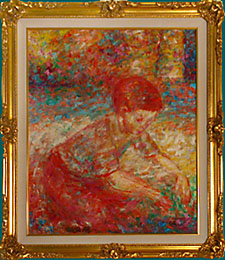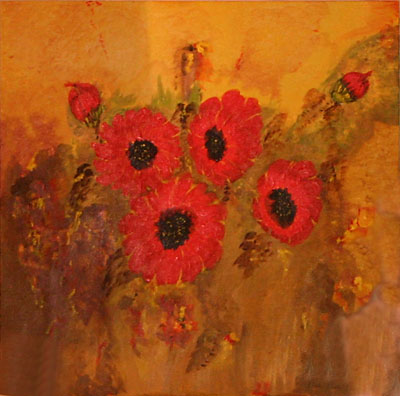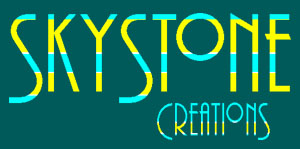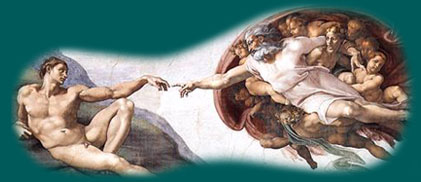|
|
|
||||||||||||||||||||||||||||||||||||||||||||||||||||||||||||||||||||||
|
A place where you can find Original Works of Art |
|||||||||||||||||||||||||||||||||||||||||||||||||||||||||||||||||||||||
|
|
|||||||||||||||||||||||||||||||||||||||||||||||||||||||||||||||||||||||
|
|
Modern Art narrates, in word and image alike, one of great stories of our time - how Western
vanguard culture created modernist art by heeding the call " to make it new." The Renaissance, Baroque,
Romantic, and Neo-Classical eras all innovated, but mainly by reinventing the past in their own contemporary terms. Even Cezanne, often viewed as the father of 20th- century modernism, declared it his goal " to make of Impressionism something solid and durable like the art of the museums ." Uniquely, the artists of our time, beginning with Matisse and Picasso, won the title " modern " by making innovation - a rejection of the past - the paramount value of their whole enterprise. Such an approach virtually guaranteed that the art it produced would be as experimental as science and a spirited, invigorating challenge for both mind and eye. It is this sense of intellectual and aesthetic ferment that Modern Art captures - in its lively text and timely scholarship, in its lavish design and abundant color, and also in its close integration of the visual and the verbal. Modern Art traces the evolution of avant-garde painting and sculpture from the late 19th century dominated by Cezanne, Seurat, Gauguin, van Gogh, and Rodin, through that great self-critical, problem-solving sequence of 20th-century movements known as Expressionism, Cubism, Dada, and Surrealism Interwoven with these developments is the epic of architecture, as this art's most vital exponents abjured Beaux-Arts practice in favor of technological advances that made possible the simplifications, after World War II, in the Bauhaus-inspired reductiveness of the International Style. Thereafter follows the account of modernism's " late," culminating moments in the audacities of Abstract Expressionism, Minimalism,  and Pop, a progression in which metaphoric painting gradually forfeited its pre-eminence to the factuality of sculpture and assemblage. But once materialistic Minimalism self-refined into little more than the ideology of its own creation, art ceased to be either painting or sculpture and modulated into dematerialized Conceptual, Performance, and Process Art. With this, the visual arts had all become post-modern. By 1980, modernism's auto-critical habit, having demolished all barriers until their absence created new barriers, would overcome even these and re-embrace the very history that successive modernisms had been at such pains to deny. It is a narrative also enriched by its borrowings from Africa, Asia, and Pre-Columbian America, as well as bound up with comparable breakthroughs in science and technology, politics and economics, philosophy and psychology. To quote Pable Picasso, "Art washes away from the soul the dust of everyday life " |
||||||||||||||||||||||||||||||||||||||||||||||||||||||||||||||||||||||
| SHOPPING FOR ART? - Some important things you should know. | |||||||||||||||||||||||||||||||||||||||||||||||||||||||||||||||||||||||
| Limited and Open Edition - Often people wonder what the difference is between a limited edition and an open edition. In art, a limited edition refers to a set of identical prints numbered in succession and signed by the artist. The number of prints in such an edition is limited only by the artist's or publisher's decision. Open editions, on the other hand, are a series of prints in an edition that has unlimited number of copies. Open edition prints are easily available and most common are referred to as a poster. Giclee - The term Giclee made its printing debut in 1985 and incorporates the technology of digital printing, whereby microscopic ink droplets are precisely positioned onto a surface. This French term literally means to "spurt" or "spray." Special inks produce incredibly true colors without the dot pattern associated with offset lithography. With its ever-improving quality, giclees are very popular today. Lithography - Speaking of lithography, this type of art work is printed from a stone or metal plate. The artist uses a greasy substance to draw on the surface of the plate, as only these greasy areas will accept ink. Once the plate is inked, high-quality paper is laid over it and the package is pulled through the press. Each print is considered a "multiple original" because the artist pulled each one from the press, or closely supervised the press operator. Serigraph - Also know as silkscreen, a serigraph is created from a stenciled design worked into a nylon or wire mesh. The design is created by blocking out areas that are not to be printed with a greasy substance applied to the screen, or with paper or other material. Once the design is in place, the mesh is positioned over high-quality paper and ink is pushed through it with a squeegee; areas that are not blocked are printed. The serigraphy process was widely used in early 20th century advertising posters and in Pop Art. Mixed Media - An equally important term is mixed media. As the name implies, mixed-media prints incorporate a variety of techniques. They start with a basic image produced by the artist on a hand-run printing press. Then the image is enhanced with a variety of materials including hand-tinting, gold and silver leafing, metallic inks, and textiles. |
|||||||||||||||||||||||||||||||||||||||||||||||||||||||||||||||||||||||
|
|
|||||||||||||||||||||||||||||||||||||||||||||||||||||||||||||||||||||||


